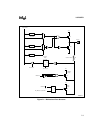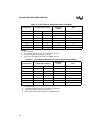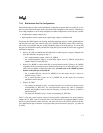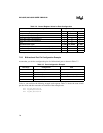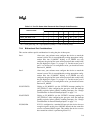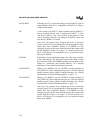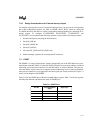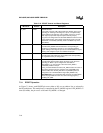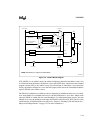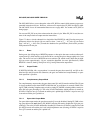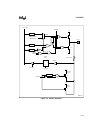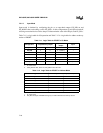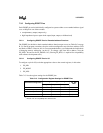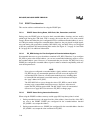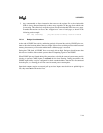
7-12
8XC196NP, 80C196NU USER’S MANUAL
7.3.1 EPORT Operation
As Figure 7-2 shows, each EPORT pin serves either as I/O or as an address line, as selected by
the I/O multiplexer. This multiplexer is controlled by the EP_MODE register. If EP_MODE.x is
clear (I/O mode), the pin serves as I/O until EP_MODE.x is changed.
Table 7-10. EPORT Control and Status Registers
Mnemonic Address Description
EP_DIR 1FE3H EPORT Direction
In I/O mode, each bit of EP_DIR controls the direction of the corre-
sponding pin. Clearing a bit configures a pin as a complementary
output; setting a bit configures a pin as either an input or an open-
drain output. (Open-drain outputs require external pull-ups).
Any pin that is configured for its extended-address function is forced
to the complementary output mode except during reset, hold, idle,
powerdown, and standby. (Standby mode is available only on the
80C196NU.)
EP_MODE 1FE1H EPORT Mode
Each bit of EP_MODE controls whether the corresponding pin
functions as a standard I/O port pin or as an extended-address
signal. Setting a bit configures a pin as an extended-address signal;
clearing a bit configures a pin as a standard I/O port pin.
EP_PIN 1FE7H EPORT Pin State
Each bit of EP_PIN reflects the current state of the corresponding
pin, regardless of the pin configuration.
EP_REG 1FE5H EPORT Data Output
Each bit of EP_REG contains data to be driven out by the corre-
sponding pin. When a pin is configured as standard I/O
(EP_MODE.
x
= 0), the result of a CPU write to EP_REG is
immediately visible on the pin.
During nonextended data accesses, EP_REG contains the value of
the memory page that is to be accessed. For compatibility with
software tools, clear the EP_REG bit for any EPORT pin that is
configured as an extended-address signal (EP_MODE.
x
set).
80C196NU Only: For nonextended data accesses, the 80C196NU
forces the page address to 00H. You cannot change pages by
modifying EP_REG.




